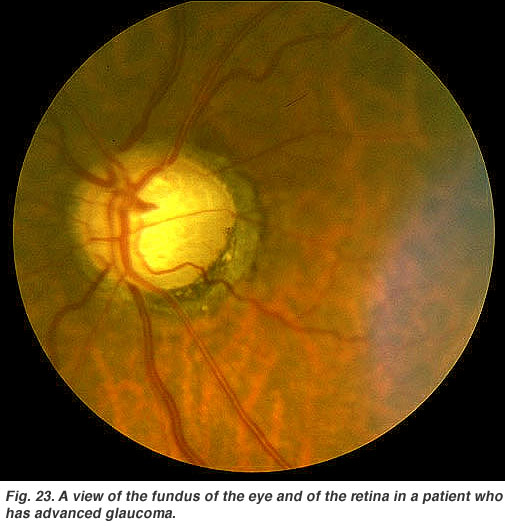Glaucoma
Glaucoma is an irreversible damage of the optic nerve that is often accompanied by high values of intraocular pressure.
It is the second cause of blindness in the western world and has many forms. The most common one, the open-angle glaucoma usually starts without obvious symptoms resulting to a delayed diagnosis. It has been calculated that almost 50% of glaucomas are not diagnosed in the population and at the time of diagnosis the optic nerve is already seriously damaged. Regular screening controls with measurment of the intraocular pressure and careful examination of the optic nerve should be carried out by an ophthalmologist, especially to those over 40 years old. In several cases additional examination of visual fields is recommended (perimetry).
Picture of advanced glaucoma:

In the Ophthalmological Department of the University Hospital of Heraklion a large number of glaucoma patients is treated. The available equipment includes systems for quantitative assessment of papilloedema (GDx, HRT, OCT), several perimeters, optical and ultrasound corneal pachymeters, Pascal tonometer and systems of ultrasound imaging of the anterior segment of the eye (UBM, Artemis). Glaucoma surgery methods include trabeculectomy, combination of phacoemulcification and trabeculectomy and placement of anti-glaucomatic valves (Ahmed FP-7, Molteno).
.jpg)





